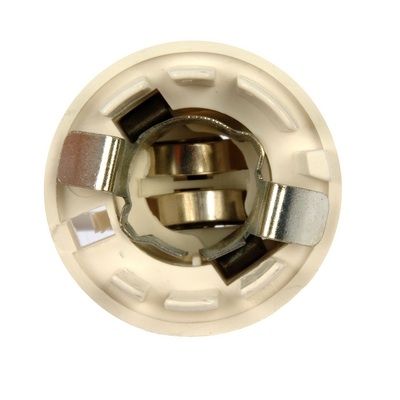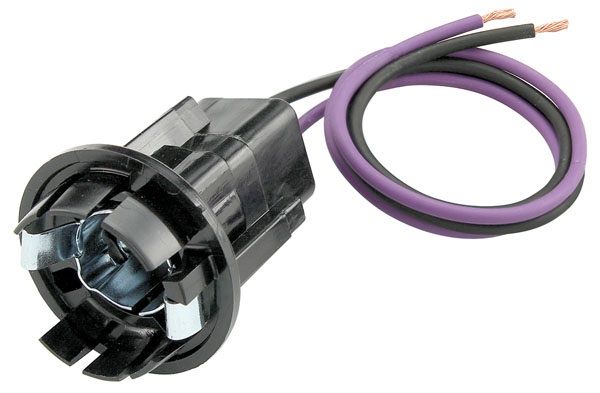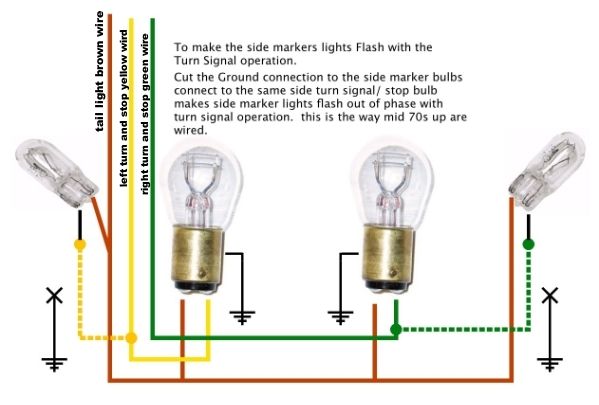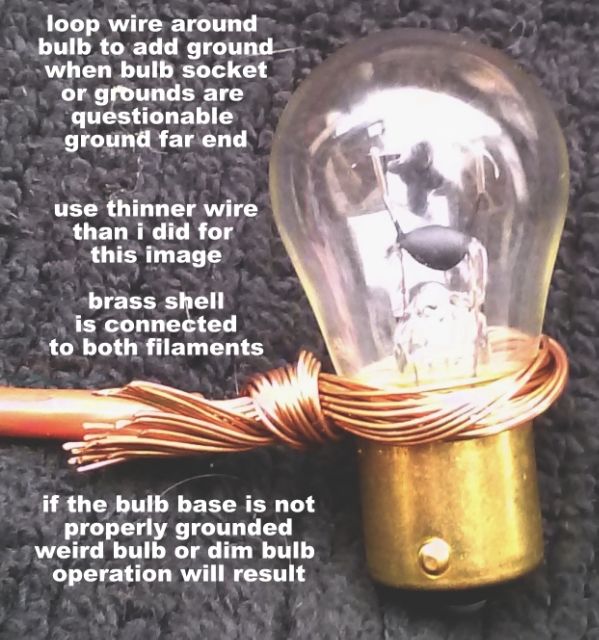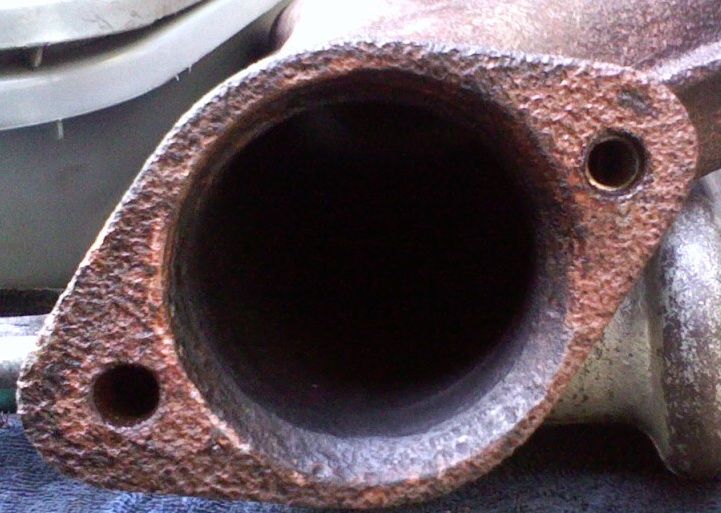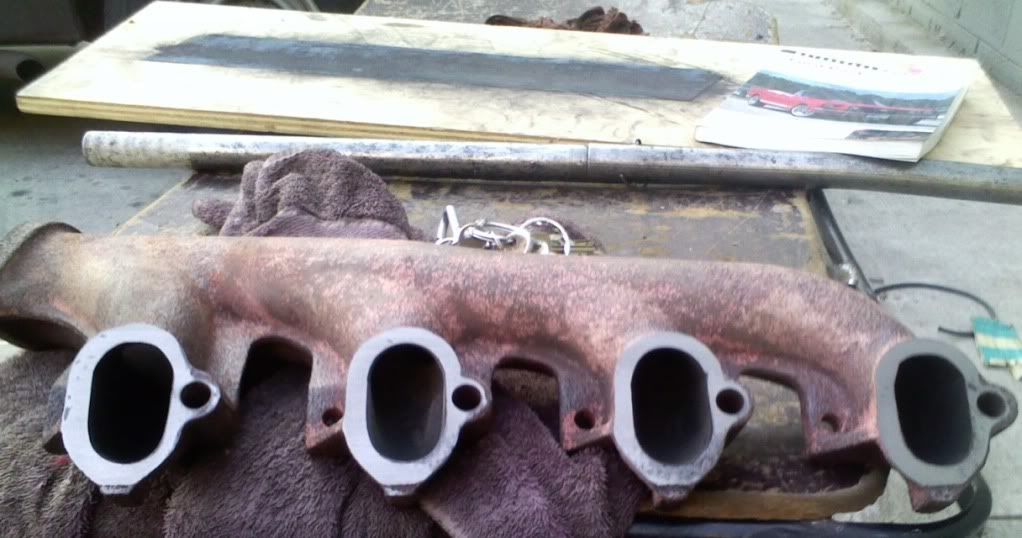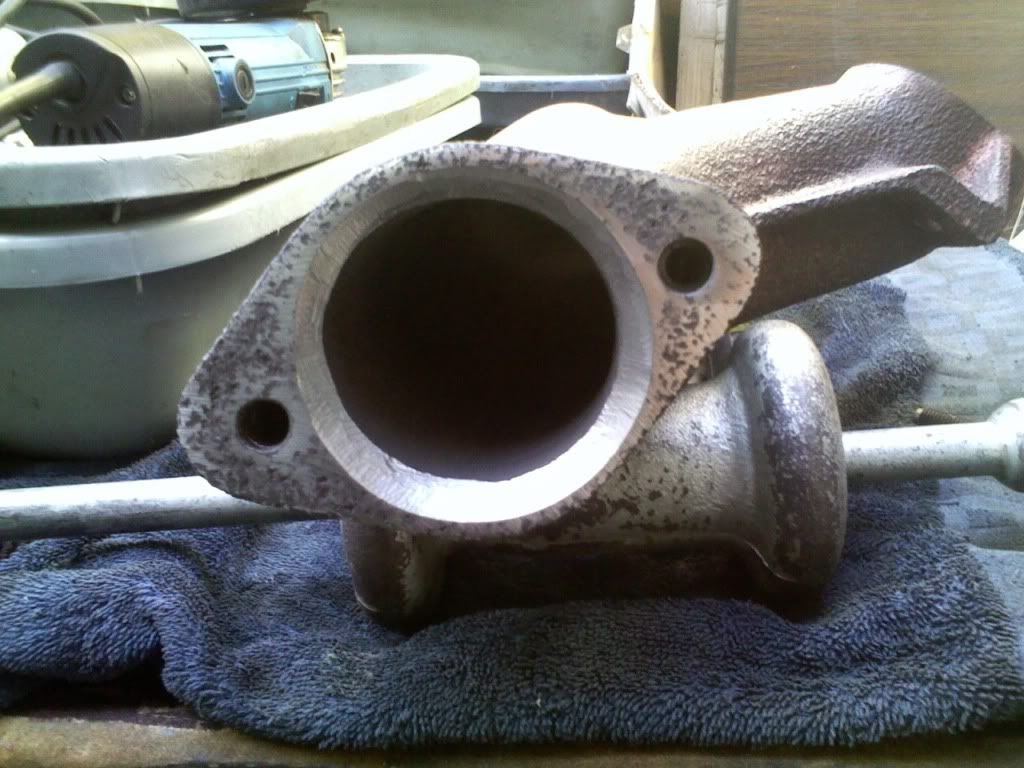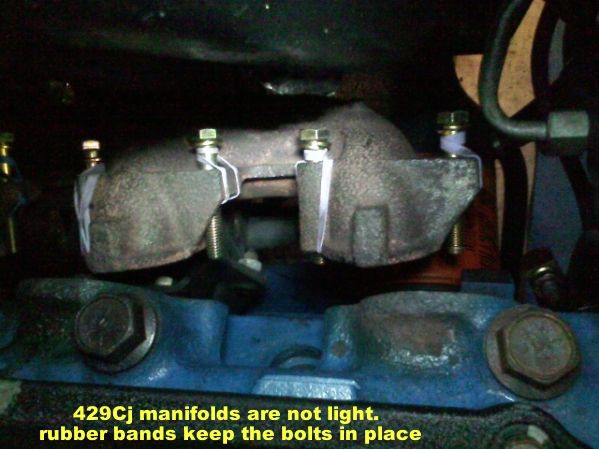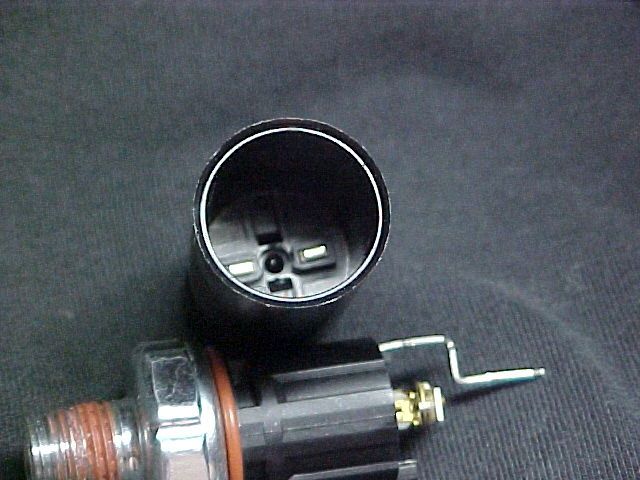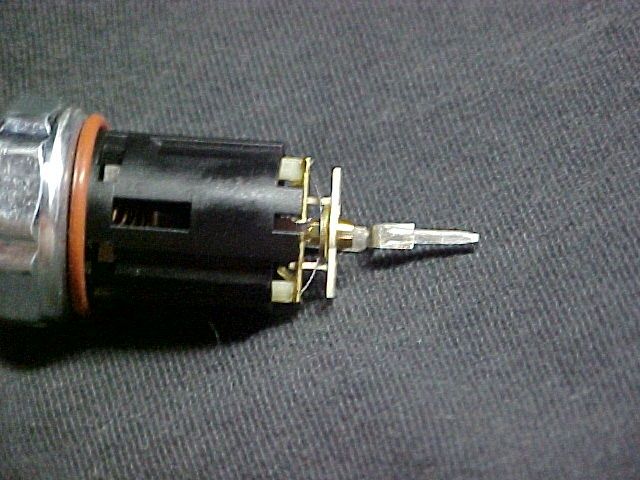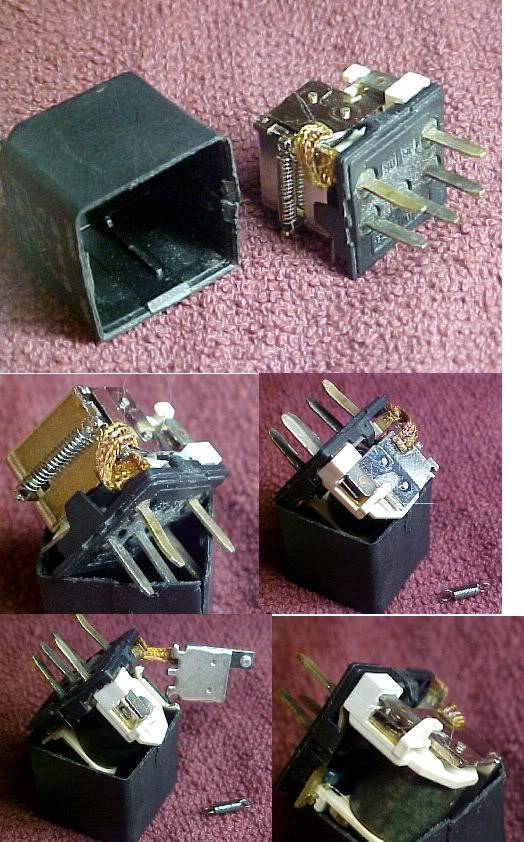this

i have been using this for about 15 years now...
why all 6 tests...
test 1 verifies the alternator is putting out some kind of voltage above battery voltage...
test 2 checks the electrical connection between the Negative battery post and the engine block...
test 3 checks the electrical connection between the Negative battery post and the Body..
test 4 checks the electrical connection between the engine and firewall..
test 5 checks the electrical connection between the Positive battery and the Fuses in the fuse block..
test 6 checks the electrical connection between the alternator output stud and the positive battery post....
why do all this... i can do tests 1 thru 4 in less than a minute on most cars..
test 5 takes a minute or two..
test 6 is impossible on some cars. but easily done on others..
lets go over why...
test 2... ever had a negative battery cable loose on the block... or on a painted or greasy surface... where its not making good contact... ever had a loose crimp at the battery terminal or at the cable lug at the engine.. i have had way too many of those over the past 43 years of fixing cars for a living..
test 3.... i can't count the number of Negative battery cables that are not connected to the body... just the pigtail dangling..
Test 4. the engine to firewall braided ground cable...
test 3 and 4 WHY... the alternator, starter , ignition system and parts of the fuel injection system are grounded to the engine...
everything else in the car is grounded to the body.. the headlights to the tail lights... parts of the fuel injection system are also grounded to the body on some cars.. so if you have a bad connection found on 3 and 4... you will have a difference in voltage between the negative battery and the body and the engine and the body..
who cares.. electrical components do.. the alternator puts out electrons on the negative side.. so the path is... alternator housing.. bracket.. head or block. negative battery cable to the negative battery post... but wait... most things are grounded to the body..
so the path continues... up the negative battery cable.. thru the mid sized wire to the inner fender.. to the rest of the car... since most things are grounded to the firewall area under the dash or A pillars.. you could have a 1 to 3 volt difference to do resistance.. i have measured up to 8.5 volts between the engine and body of a 98 chevy truck with horrible battery cables with splices.. grease... loose.... 3.5 volts on 6.. between the alternator output stud and the positive battery... electrons are lazy .. they want to take the shortest route.. heck.. that could be thru the throttle linkage.. how many of you recall fords and dodge vans of the 60s and 70s that the throttle linkage balls were eaten away by something... or the U joints failed again and again..
front wheel drive cars if the engine to firewall ground is bad... can have the electrons take the path from the alternator to engine. to transmission case.. to CV shafts... to wheel bearing where a greasy game of frogger is played .. electrons arcing the balls and races as they jump between them as the wheels roll.. up the strut to the stut mount or thru the steering linkage.. which ever way is the shortest to the body ground circuit..
you are going wayne is NUTS. try tests 1 thru 4 on your rods and daily drivers.. throw a DC amp clamp around the braided engine to firewall cable with the defroster blowing...
decades ago i started working at a friends shop part time.. there was an 86 cougar 2.3 turbo sitting against the fence in the corner .. nobody could get it to run.... we needed to move the car for something.. i got a skinny tech to slide into the drivers seat and pop the hood... i dropped in the battery.. he fired it up.. belching black smoke.. barely running... sparking like crazy from the braided ground strap just above the starter on the bell housing.. i took my wrench and tightened it back up.. had him restart the engine... smooth as glass.. boss jumped in it and took it around the block.. his eyes popped out.. he said that thing is as fast as his 87 turbo coupe with the intercooler... nobody could fix it..
it was a * loose ground cable.. ford grounded most of the fuel injection to the firewall inside the car..
test 5... positive battery to multiple fuses in the fuse box.. why not just one... if you have ever been inside a fuse box.. there are different buss bars connecting different fuse groups.. sometimes like on some dodges the power comes in a multi plug cable end in the bottom of the fuse box.. if one of those gets corroded.. and it happens.. some of the fuses get less power...
94 to 98 chevy pickups get corrosion from the water off the cowl on the end of the 95 inch long cable and the stud that pinches the multiple buss bars together..
a lot of 97 98 S10 pickups have weird issues usually with the 2.2 engine.. if you do test 5.. you will find several fuses in the middle... 1/10 to 3/10 lower than the others... i then noticed the aux stud closes to the master cylinder in the underhood fuse box had a copper buss bar but not nut holding it down to the backing plate.. a 6x1.0 flange nut fixed the issue... over the years on other forums.. that has popped up dozens of times.
ever seen or had a 2004 dodge caravan version that after you run a power sliding or power rear door with the engine running that every light in the car goes insane till you shut off the engine and restart.. super dim to crazy bright every second or so.. pulsing... this popped up on a forum i moderated.. dozens of posts on it.. dealers had replaced the alternator.. the under hood fuse box.(ipm). the pcm... the battery.. usually $1,200 to $1,500 worth of parts and it still did it.. i got a forum member to run all 6 tests with the engine running in pulsing voltage mode...
test 5 and 6 went insane.. 0 to 4 volts again and again... i had him start testing step by step..
battery post to the battery terminal... 0.. no fluctuation... battery terminal to the bare wires of the battery cables... pulsing... i ask him to wiggle the cables.. yep the strands thru the crimp wiggled.. chrysler had not crimped the cable end on tight enough..
what happened is the battery cable being loose.. routing went alternator to starter to battery terminal .. the other wire went to the underhood fuse box where all the power to the car including the PCM is distributed.. the PCM controls the field windings of the chrysler alternators... so the heavy load at idle from the power door exceed the amount of current that could go thru the loose crimp.. so the fuse box and PCM side of the positive battery connection dropped voltage significantly... enough to make the PCM command full field to keep up... but the alternator was on the other side of the loose crimp... so it went over 15 volts without bringing up PCM voltage.. when the switch to the power door openers is released.. the over 15 volts flys thru the loose crimp to the fuse box and PCM.. lights go bright. the PCM says nope.. and turns off the power to the field winding.. so the system voltage drops back to battery voltage or less do to the loose connection.. a second later the PCM says too low.. full field .. a second after than the PCM sees 15+ volts.. shuts the alternator off again... in a feed back loop till the car is restarted..
how could you find that issue without a voltage drop test 5 and 6..
test 6. why 3/10s of a volt.. instead of 4/100ths of a volt.. less is better but copper is expensive for OEMs... imagine how many miles of copper wire they go thru daily... 3/10 or 2/10s is designed in... except for hondas.. their cables are so short you might have to drop to 2 volts DC scale to see 0.007 volts.. 7/1000ths of a volt..
wait... why 7/10s on chryslers with dashboard amp meters...
the chrysler charging circuit is long.. lets follow it... from the alternator output stud to the bulk head connector.. from the inside of the bulk head connector over to the amp meter... from the other stud on the amp meter back to the bulk head connector.. thru it to the starter relay on the inner fender or firewall then to the positive battery post.. that has to be 7 to 12 feet on some chryslers.. i got that figure out of a 1966 imperial factory service manual... i have verified it many times...
feel free to print as many copies of this voltage drop test as you want.. i created it.. i have posted it thousands of times on other forums.. i have posted it on this forum a bunch of times but not in the last 5 or 6 years... hopefully auto shop teachers on this forum will save that image and teach it in their class rooms and shops.. i used to go to friends shops with a bunch of copies and walk the techs thru it.. on a car in their lots..
https://i.imgur.com/SnzhDh0.jpg
i don't recall when i joined this forum.. 96 or so i think..
lastly... i use a 22 buck harborfreight multimeter item 61593 to do these.. but a 10 buck to 500 buck version will work... i like that one as it has a 20 amp DC unfused setting for doing parasitic draw tests..
my test leads are 20 feet long each.. 18 gauge test lead wire.. banana plugs on one end... js popper bent nose telco type test clips with bed of nails and piercing spike
this is what i use.. https://www.allelectronics.com/item/alg-9/bed-of-nails-test-leads/1.html connected to my 18 gauge test lead wire with a tiny ring terminal... the wire on these is tinsel .. audio level only.. not enough copper for multimeter use... so ditch the wire all the way to the screw inside under the boot..
why 20 foot long each.. i work on cars and trucks... batteries in the trunk... batteries under the back seat... batteries under the front hood with engines in the rear..
HF sells a neat 30 foot wind up test lead set with 18 gauge test lead wire.. but the gators are cheap on the ends..
this is a limited item.. but a killer deal.. https://www.allelectronics.com/item/tl-128/test-leads-kit-with-pouch/1.html
not nearly long enough... but so much better than just pointy probes..
there is so much more.. but i have probably lost most of you by this point..
wayne....
61593

i have been using this for about 15 years now...
why all 6 tests...
test 1 verifies the alternator is putting out some kind of voltage above battery voltage...
test 2 checks the electrical connection between the Negative battery post and the engine block...
test 3 checks the electrical connection between the Negative battery post and the Body..
test 4 checks the electrical connection between the engine and firewall..
test 5 checks the electrical connection between the Positive battery and the Fuses in the fuse block..
test 6 checks the electrical connection between the alternator output stud and the positive battery post....
why do all this... i can do tests 1 thru 4 in less than a minute on most cars..
test 5 takes a minute or two..
test 6 is impossible on some cars. but easily done on others..
lets go over why...
test 2... ever had a negative battery cable loose on the block... or on a painted or greasy surface... where its not making good contact... ever had a loose crimp at the battery terminal or at the cable lug at the engine.. i have had way too many of those over the past 43 years of fixing cars for a living..
test 3.... i can't count the number of Negative battery cables that are not connected to the body... just the pigtail dangling..
Test 4. the engine to firewall braided ground cable...
test 3 and 4 WHY... the alternator, starter , ignition system and parts of the fuel injection system are grounded to the engine...
everything else in the car is grounded to the body.. the headlights to the tail lights... parts of the fuel injection system are also grounded to the body on some cars.. so if you have a bad connection found on 3 and 4... you will have a difference in voltage between the negative battery and the body and the engine and the body..
who cares.. electrical components do.. the alternator puts out electrons on the negative side.. so the path is... alternator housing.. bracket.. head or block. negative battery cable to the negative battery post... but wait... most things are grounded to the body..
so the path continues... up the negative battery cable.. thru the mid sized wire to the inner fender.. to the rest of the car... since most things are grounded to the firewall area under the dash or A pillars.. you could have a 1 to 3 volt difference to do resistance.. i have measured up to 8.5 volts between the engine and body of a 98 chevy truck with horrible battery cables with splices.. grease... loose.... 3.5 volts on 6.. between the alternator output stud and the positive battery... electrons are lazy .. they want to take the shortest route.. heck.. that could be thru the throttle linkage.. how many of you recall fords and dodge vans of the 60s and 70s that the throttle linkage balls were eaten away by something... or the U joints failed again and again..
front wheel drive cars if the engine to firewall ground is bad... can have the electrons take the path from the alternator to engine. to transmission case.. to CV shafts... to wheel bearing where a greasy game of frogger is played .. electrons arcing the balls and races as they jump between them as the wheels roll.. up the strut to the stut mount or thru the steering linkage.. which ever way is the shortest to the body ground circuit..
you are going wayne is NUTS. try tests 1 thru 4 on your rods and daily drivers.. throw a DC amp clamp around the braided engine to firewall cable with the defroster blowing...
decades ago i started working at a friends shop part time.. there was an 86 cougar 2.3 turbo sitting against the fence in the corner .. nobody could get it to run.... we needed to move the car for something.. i got a skinny tech to slide into the drivers seat and pop the hood... i dropped in the battery.. he fired it up.. belching black smoke.. barely running... sparking like crazy from the braided ground strap just above the starter on the bell housing.. i took my wrench and tightened it back up.. had him restart the engine... smooth as glass.. boss jumped in it and took it around the block.. his eyes popped out.. he said that thing is as fast as his 87 turbo coupe with the intercooler... nobody could fix it..
it was a * loose ground cable.. ford grounded most of the fuel injection to the firewall inside the car..
test 5... positive battery to multiple fuses in the fuse box.. why not just one... if you have ever been inside a fuse box.. there are different buss bars connecting different fuse groups.. sometimes like on some dodges the power comes in a multi plug cable end in the bottom of the fuse box.. if one of those gets corroded.. and it happens.. some of the fuses get less power...
94 to 98 chevy pickups get corrosion from the water off the cowl on the end of the 95 inch long cable and the stud that pinches the multiple buss bars together..
a lot of 97 98 S10 pickups have weird issues usually with the 2.2 engine.. if you do test 5.. you will find several fuses in the middle... 1/10 to 3/10 lower than the others... i then noticed the aux stud closes to the master cylinder in the underhood fuse box had a copper buss bar but not nut holding it down to the backing plate.. a 6x1.0 flange nut fixed the issue... over the years on other forums.. that has popped up dozens of times.
ever seen or had a 2004 dodge caravan version that after you run a power sliding or power rear door with the engine running that every light in the car goes insane till you shut off the engine and restart.. super dim to crazy bright every second or so.. pulsing... this popped up on a forum i moderated.. dozens of posts on it.. dealers had replaced the alternator.. the under hood fuse box.(ipm). the pcm... the battery.. usually $1,200 to $1,500 worth of parts and it still did it.. i got a forum member to run all 6 tests with the engine running in pulsing voltage mode...
test 5 and 6 went insane.. 0 to 4 volts again and again... i had him start testing step by step..
battery post to the battery terminal... 0.. no fluctuation... battery terminal to the bare wires of the battery cables... pulsing... i ask him to wiggle the cables.. yep the strands thru the crimp wiggled.. chrysler had not crimped the cable end on tight enough..
what happened is the battery cable being loose.. routing went alternator to starter to battery terminal .. the other wire went to the underhood fuse box where all the power to the car including the PCM is distributed.. the PCM controls the field windings of the chrysler alternators... so the heavy load at idle from the power door exceed the amount of current that could go thru the loose crimp.. so the fuse box and PCM side of the positive battery connection dropped voltage significantly... enough to make the PCM command full field to keep up... but the alternator was on the other side of the loose crimp... so it went over 15 volts without bringing up PCM voltage.. when the switch to the power door openers is released.. the over 15 volts flys thru the loose crimp to the fuse box and PCM.. lights go bright. the PCM says nope.. and turns off the power to the field winding.. so the system voltage drops back to battery voltage or less do to the loose connection.. a second later the PCM says too low.. full field .. a second after than the PCM sees 15+ volts.. shuts the alternator off again... in a feed back loop till the car is restarted..
how could you find that issue without a voltage drop test 5 and 6..
test 6. why 3/10s of a volt.. instead of 4/100ths of a volt.. less is better but copper is expensive for OEMs... imagine how many miles of copper wire they go thru daily... 3/10 or 2/10s is designed in... except for hondas.. their cables are so short you might have to drop to 2 volts DC scale to see 0.007 volts.. 7/1000ths of a volt..
wait... why 7/10s on chryslers with dashboard amp meters...
the chrysler charging circuit is long.. lets follow it... from the alternator output stud to the bulk head connector.. from the inside of the bulk head connector over to the amp meter... from the other stud on the amp meter back to the bulk head connector.. thru it to the starter relay on the inner fender or firewall then to the positive battery post.. that has to be 7 to 12 feet on some chryslers.. i got that figure out of a 1966 imperial factory service manual... i have verified it many times...
feel free to print as many copies of this voltage drop test as you want.. i created it.. i have posted it thousands of times on other forums.. i have posted it on this forum a bunch of times but not in the last 5 or 6 years... hopefully auto shop teachers on this forum will save that image and teach it in their class rooms and shops.. i used to go to friends shops with a bunch of copies and walk the techs thru it.. on a car in their lots..
https://i.imgur.com/SnzhDh0.jpg
i don't recall when i joined this forum.. 96 or so i think..
lastly... i use a 22 buck harborfreight multimeter item 61593 to do these.. but a 10 buck to 500 buck version will work... i like that one as it has a 20 amp DC unfused setting for doing parasitic draw tests..
my test leads are 20 feet long each.. 18 gauge test lead wire.. banana plugs on one end... js popper bent nose telco type test clips with bed of nails and piercing spike
this is what i use.. https://www.allelectronics.com/item/alg-9/bed-of-nails-test-leads/1.html connected to my 18 gauge test lead wire with a tiny ring terminal... the wire on these is tinsel .. audio level only.. not enough copper for multimeter use... so ditch the wire all the way to the screw inside under the boot..
why 20 foot long each.. i work on cars and trucks... batteries in the trunk... batteries under the back seat... batteries under the front hood with engines in the rear..
HF sells a neat 30 foot wind up test lead set with 18 gauge test lead wire.. but the gators are cheap on the ends..
this is a limited item.. but a killer deal.. https://www.allelectronics.com/item/tl-128/test-leads-kit-with-pouch/1.html
not nearly long enough... but so much better than just pointy probes..
there is so much more.. but i have probably lost most of you by this point..
wayne....
61593




 ??
??
